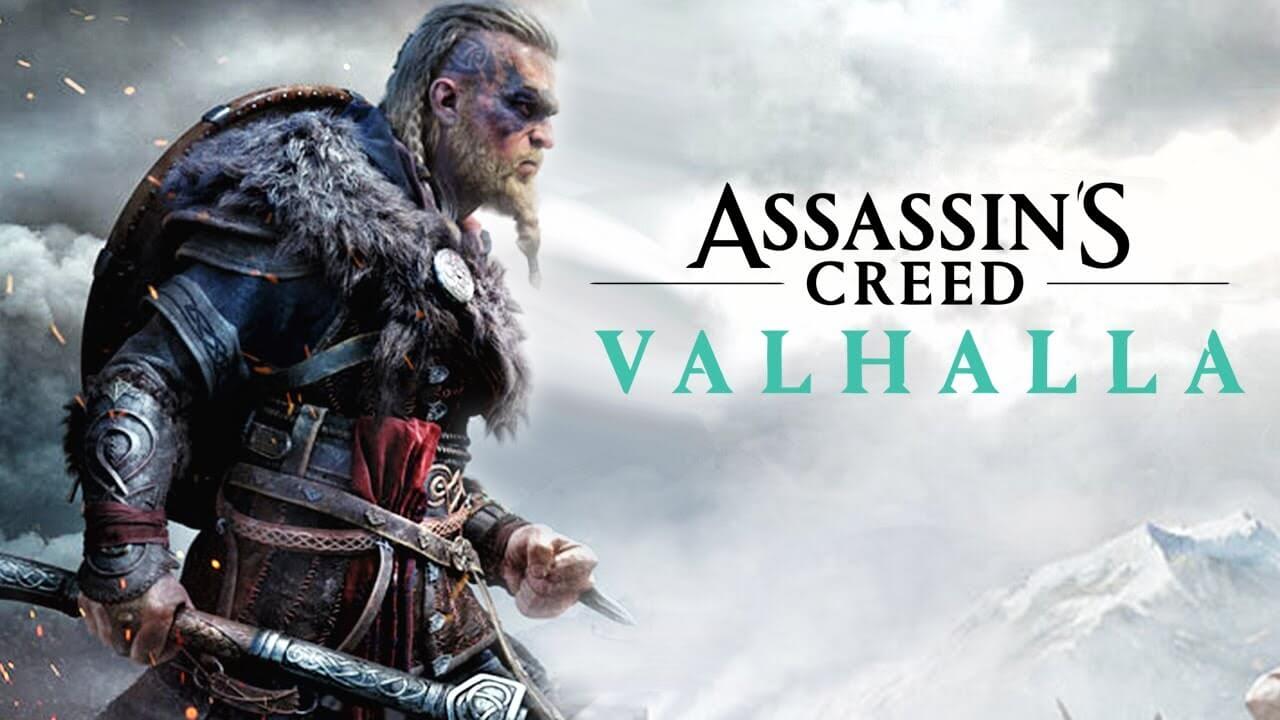At this point the Assassin’s Creed franchise is a holiday staple. What began as a perplexing new IP in 2007 has since gone on to spawn numerous sequels, few of which have actually had numbers attached to them. The series itself isn’t what it once was either, and is instead an amalgamation of parts from genres that didn’t originally appear in the first number of games. What was once a stealth action title has gotten less stealthy and more action oriented over time, and that’s been especially true since 2017’s Assassin’s Creed: Origins. That Egypt-based experience ushered in a new era for Ubisoft’s second or third most popular series (assuming Just Dance is still in the lead), because it took a lot of inspiration from an entirely new genre: RPGs.
With this year’s Assassin’s Creed: Valhalla, we’re now at the third stage of this new wave of games. However, like Origins and Odyssey after it, Valhalla isn’t the same as the one that came before it, because it also introduces new elements that we haven’t really seen before. There’s still no multiplayer to be found, but the developers took inspiration from games like Dark Souls when it came to designing the combat. Thankfully, however, this particular experience isn’t nearly as difficult as those.
Valhalla is practically a wish come true for many, who wanted to play an Assassin’s Creed game with a viking protagonist and a wintry setting. For the first time in the franchise’s 13 year history, players can now step into the shoes of a male or female viking named Eivor, who meets members of the Assassins’ Guild while attempting to improve life for his/her clan. This occurs after a rather deadly and nightmarish night, which sees the character lose their parents. They’re not left out, though, and are quickly brought under the wing of the king, and raised alongside his warrior of a son. As such, the two call each other siblings.
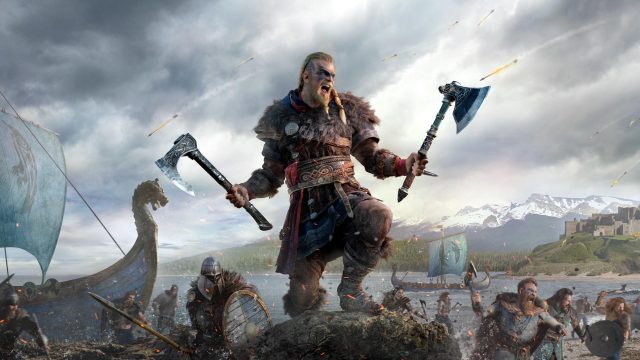
Things begin in a very snowy and mountainous region of Norway, where the cliffs make for a long climb and the snow makes for a pretty and pristine visage. Nestled in the mountains is the home village of the Raven Clan, which is headed by King Strybjorn. There, Eivor will attempt to get revenge on those who wronged them, and in bloody fashion. All the while, people from their village will have requests and needs that must be met.
What some may be surprised to hear is that Assassin’s Creed: Valhalla doesn’t entirely take place in this remote, cold and dangerous region of the world. No, the story actually revolves around migration and settling, as members of the Raven Clan try to make better lives for themselves. Thus, it’s only several hours before the location changes from mountainous Norway to a beautiful, autumnal version of early England. To say that its colourful leaves really pop and make for a beautiful map would be an understatement.
Once you settle in England, your goal becomes clear: As one of the leaders of this new settlement it’s your job to build it up. At the same time, a fellow clan member will introduce you to an allegiance map, which allows you to choose which other groups you’ll try to help and then align with. Simply put, this is where you choose your story missions.
At first your ‘brother’ will go off to deal with a rather murderous clan of vikings with whom he wishes to align with. That doesn’t mean that you have to do the same. This game offers two different choices, and it’s possible to go off and try to align with a warrior named Soma before traveling to where Sigurd is. That’s what I chose to do, without knowing how things would unfold afterwards. I still had to do the other set of story missions, so it seems that the only choice is which order you do things in.
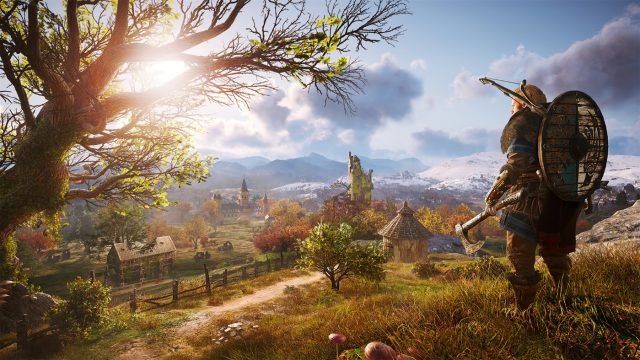
As with the last two iterations of Assassin’s Creed, both of which I loved, parts of the map are locked because they require you to be at a high character level. However, instead of assigning skill points directly to your character and leveling him or her up, you’ll use them to unlock skill increases through an astral map, and the result will be your accumulated power level. Each region, then, has its own power level requirement. Some are as high as maybe 120 or 130, but to start off you’re looking at something in the 20s, and then up to the 50s or so. As long as you do the required story missions and spend time completing some of the side content you should be fine.
Speaking of side content: Please note that side quests have been replaced by world events. It’s mostly just a different moniker, because they generally work the same way. You’ll see an icon on your map, go to where it directs you, and get asked to help someone in need. This is true for the most part, but some of these world events are more creative than what we’re used to. It seems that each one is different, and some really stand out. For example, one of the first ones I did tasked me with destroying a couple’s home because they could only have sex while in the midst of a war or conquest. During another, I had to get into a fist fight with a grandfather whose punch was so strong that he could knock me out in one hit. This was at the behest of his grandchildren, of course.
During my time with Assassin’s Creed: Valhalla, I’ve completed a lot of world events. I saw the achievement for completing ten of them and wondered if they’d be scarce, but that unlocked very early on because I did so many. The two I mentioned were highlights, but some others had me meeting and assisting a man with an axe stuck in his forehead, fighting for a throne made of mud in an abandoned church, helping someone carry dropped apples before bobbing for some at their home and making sure that a very stoned man survived his inebriated journey. Needless to say there’s a lot of creativity and humour to be found within these side quests, and it’s appreciated. I had a lot of fun with them, and look forward to finding and completing more.
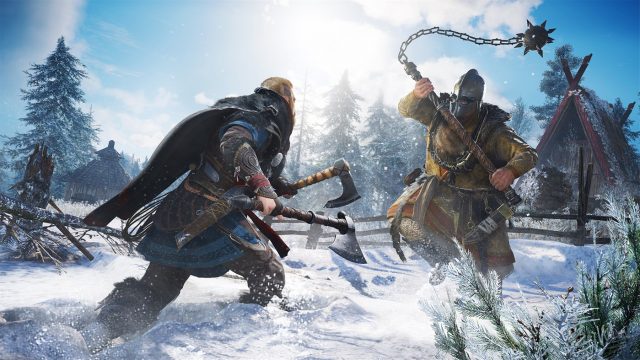
At first, I must admit that I didn’t know if this iteration would be for me. The starting combat sequences were rather difficult, and were slower than I’d expected.
When I went back to finish Origins‘ DLC after starting Odyssey, it was hard to adjust to that game’s combat again because things had changed for the better. I’m not sure if that’s the case here. While the combat will be preferable to a lot of people, I think I still slightly prefer Odyssey‘s, even though I’ve gotten used to and a lot better at fighting the enemies scattered throughout Valhalla.
As I mentioned at the start of this review, some inspiration was taken from the Soulsborne games. Being that I can’t stand that sub-genre, I wasn’t too enthused at first. The combat was challenging, and the addition of a stamina bar made it less fun. Over time, though, I’ve started to enjoy it more and more, and generally have no problem with it now. That said, I am worried that more Soulsborne elements may eventually make their way into this series, which I play every year or two and enjoy.
Stamina is required for everything you do in combat, outside of shooting an arrow or performing a special ability, because there are special meters for those. Every time you swing your axe, sword, mace or whatever it is you’ve got equipped, you’ll lose stamina. The amount is dependent on the type of attack you choose to use, be it a regular swipe or a heavy hit. This is also true of rolling out of danger, which is something you’ll get used to managing. Don’t let the inaugural battles turn you off, because it does get better and isn’t always that hard.
If I remember correctly, Assassin’s Creed: Odyssey had regenerating health like previous games in the series. It’s been a decent amount of time since I played it last, but I remember that I could fall from a height and wouldn’t have to worry about dying. My health would go low, but it would eventually regenerate. This time around, there is no regenerating health, unless it’s locked behind an ability I didn’t find. Instead, you’ll need to use rations to heal, and will have to take food from pots or pick berries to fill the meter when it’s depleted. Things can be a bit challenging with only one available ration, so I recommend picking up as many resources as you can in order to level your available amount of rations up. Every time I saw an iron ore deposit, I would smash it and pick up the pieces. I also tried to hunt and loot as much as possible.
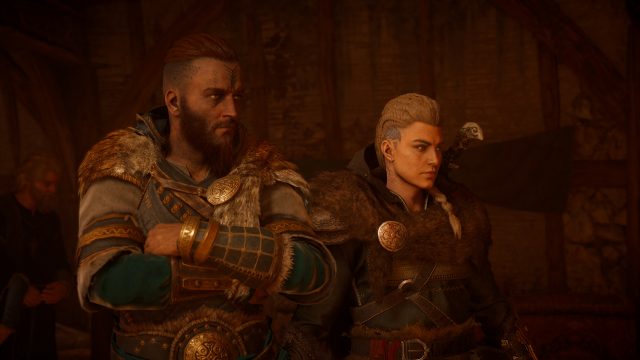
From the start, though, things were more streamlined. I had heard that this was going to be a tighter and perhaps even smaller game than Odyssey, but was still surprised by some things. For instance, there’s not a lot of crafting to do outside of upgrading certain things like your ration pouch and arrow holder. Iron ore can be used for these things, but it can also be turned into the blacksmith at your camp for weapon upgrades. You’ll also use materials to upgrade weapons and armor/clothing items while on the go, through the equipment screen.
There are shops to buy and sell goods, and there you’ll find things like runes (which are new, and can be added to weapons and armor for different types of stat boosts), hairstyles (for customizing your Eivor) and arrows. Many of the trinkets you collect can be sold for profit, as can leather and other animal products if you choose to. Runes can also be found through basic progression and the completion of both combat encounters and quests (both of which are often one and the same), so you won’t necessarily need to buy any.
Speaking of your camp or village, it’s important to reiterate that a big part of Eivor’s goal is to better the lives of those — in my case, since I let the Animus choose and ended up with a female character — she settled with. This means collecting building materials as you quest and conquer, then returning to camp and using them to build different encampments. Options and necessities include the blacksmith’s shop, the trader’s store, a horse stable, a fishing post and more. This will slowly raise your village’s level from one to six. You may not get to level six during the story, but then again you may if you really take your time and focus on the village.
Due to the fact that Valhalla‘s map includes two different countries it’s said to be slightly larger than the one found in Odyssey, but it doesn’t really feel like it. When I looked at the maps of the previous two games, they both seemed insurmountably massive. That ended up being true, too, because even after completing Origins and doing as many side quests as I could manage numerous areas were still locked behind much higher level requirements. Odyssey was very similar. Valhalla may be bigger in scope, but it doesn’t exactly feel it, and maybe that has something to do with its lesser amount of waterways.
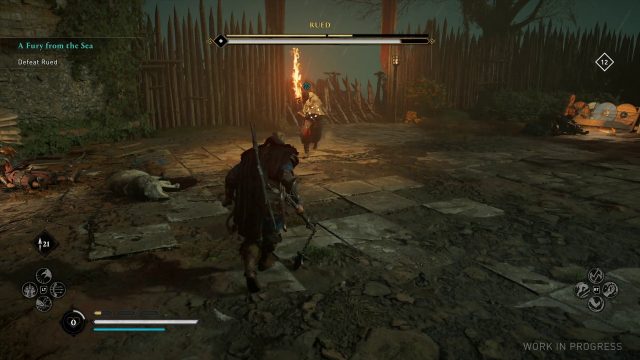
In previous games, sailing meant sometimes entering into pirate-esque naval battles with other ships, or destroying merchant ships for goods. This time around the emphasis is on travel, and that ship combat stuff has taken a backseat. To be honest, I’m quite okay with this. It was neat and novel at first, but it eventually became tedious and was honestly my least favourite part of the last games. Being able to sail from one point of the map to another was certainly cool, but being forced into ship battles over and over again just wasn’t that fun for me. It was fun the first time I played through Assassin’s Creed IV: Black Flag, but I even got a bit tired of them then.
Since a lot of the campaign takes place along the coasts of England and Norway, you’ll mostly be dealing with rivers and streams instead of oceans. At least one quest will even task you with searching for a crypt by looking at the map and finding where two specific rivers meet. The text is a bit small, and that’s the only real issue I had with that design, because it was a tad hard to read the river names from where I was sitting.
As you explore this beautiful version of rustic old England, you’ll find many different points of interest, almost all of which will appear on your minimap unless you’ve chosen to play without indicators. Golden orbs will send you in the direction of gold and other loot, which is often found inside enemy encampments that must be attacked and/or raided. White orbs, on the other hand, lead you to world events. Along the way you’ll also discover totems to pray at, rocks to stack and Animus glitches. Skill books are also discoverable, and are often found in hidden caves, basements and the like. Finding and reading these will grant you special abilities (like throwing multiple axes, ramming enemies or shooting a barrage of arrows at once) which can be linked to the face buttons. Pressing one trigger opens up one menu consisting of four equipped abilities, while pressing the other trigger provides another four options.
Many of the encampments and villages you discover can be raided, which is done by pressing the d-pad to open up the radial menu and selecting the raid option. This summons numerous computer controlled allies, who will rush into battle alongside you. This makes your goal storming the gates, breaking them open (or climbing over them), and attacking the guards inside. You can take a place over by breaking its defenses, burning its buildings and stealing its loot, which marks the end of a raid. Sometimes this mechanic even factors into main quests, including the biggest one before you leave Norway.
There are also minigames to be found within settlements, and a couple of them are quite unique. For starters, there’s a game of dice and cards which those who love things like Gwent may enjoy, although I found it to be tedious myself. There are also drinking challenges, where you must time your button presses to drink as much as possible, while also doing your best not to stumble and spill. Those are surprisingly hard, and I’ve yet to actually win one. Lastly, there’s flyting, which is a speech battle that is based on rhyming. Those were pretty funny, not to mention unique. Doing a lot of flyting can also improve your conversation skills and open up more options, like persuasion or lying. There is, after all, a dialogue tree full of choices to be found in Assassin’s Creed: Valhalla.
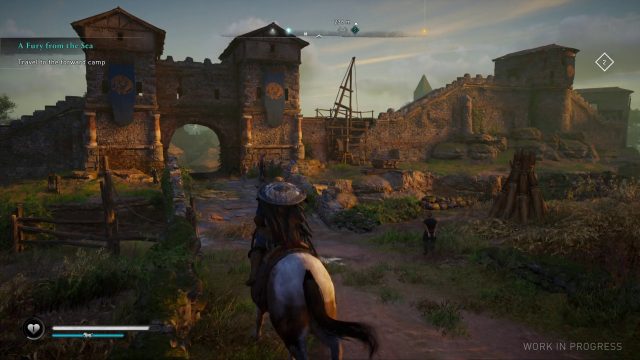
Those who are new to the series will likely be confused by the Animus, which allows everything to happen. At certain points, control will transfer from Eivor to the real world human being controlling his or her actions through the immersive Animus computer. At these points you get to play as Layla, who featured into the previous games. She and her allies have holed up in an old cottage near Eivor’s grave, and are attempting to piece things together from there. Thankfully you aren’t taken out of the virtual world often, because while Layla’s parts aren’t as tedious as Desmond’s used to be, they aren’t the best part of the game and never have been. That said, her story remains important for the Assassin’s Creed canon. After all, Abstergo haven’t stopped being jerks.
Eivor, herself, is a very strong willed character who cannot be defined the same way as previous protagonists, or assassins if you will. She’s not shy to voice her opinion, can be both crass and rude, and will be a very strong female character if you decide to choose that gender. The dialogue options often lack nice or sweet choices, and tough decisions will have to be made. Thankfully, Eivor is a badass who’s up to the challenge. That said, I do feel that the stories found in Assassin’s Creed: Origins and Odyssey were better, and that Cassandra was a deeper, more likeable and better written protagonist. Don’t read this as me saying Valhalla is a poorly written game with a crappy main character. I just prefer Odyssey overall.
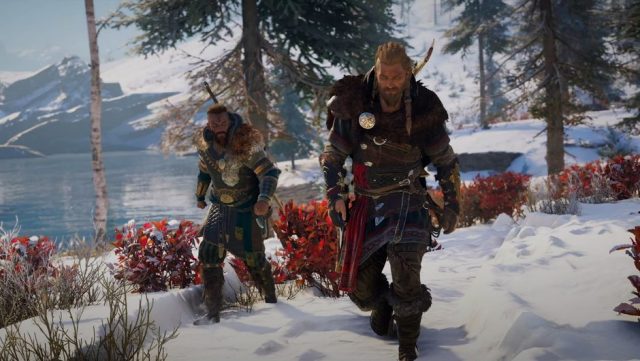
My time with Assassin’s Creed: Valhalla was spent using an Xbox Series S review unit and playing at 1080p. While I wish I could’ve played it in 4K, I was still very impressed with what I got. The game looks stunning in 1080p, so I can only imagine how it looks on a newer TV using the PlayStation 5 or Xbox Series X. Thus, if you don’t have a state of the art TV, decided to just get the S, or are playing on last-gen consoles, you’ll still be in for a treat. The art design is excellent, and England looks incredible thanks to some fantastic foliage and world design.
I’ve been lucky, and have thankfully not had any notable issues or experienced any big glitches. I’m not saying this is a perfect game, but it has run very well on the S and I cannot complain there. Loading times are pretty quick, and the gameplay has been rather seamless.
Like almost all of the games in this series, Valhalla‘s sound design is pretty top-notch, and the voice acting is almost always of quality. Eivor’s got quite the raspy voice, and isn’t as likeable as Cassandra was, but her actress did a good job of portraying her. The same is true of the main supporting cast and those who feature into the story and comedic side missions. Furthermore, the combat is loud and boisterous, the music is rather excellent and things sound as you’d hope they would.
Overall, Assassin’s Creed: Valhalla is an easy-to-recommend game. While it’s not my favourite, it’s another very good sequel for this long running and widely popular series. It’s certainly different from previous games, especially the first many Assassin’s Creed games that all came before Origins, but its alterations work pretty well. I wish there was less of a Dark Souls influence, but thankfully the difficulty wasn’t carried over from that series or its clones, and this isn’t a Darksiders 3 type of disappointment on that front.
If you’re a fan of epic action RPGs, or have been playing Assassin’s Creed for years, you can’t go wrong here. Valhalla may not be as memorable as Odyssey, but it’s got a lot of great things within it, and is a rather good game overall. One that is easy to get immersed within.
This review is based on the Xbox Series S version of the game. We were provided with review code.

